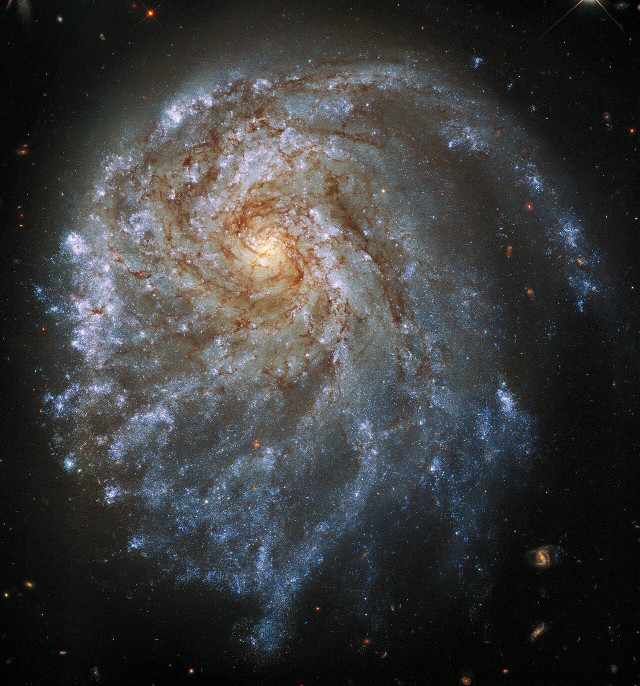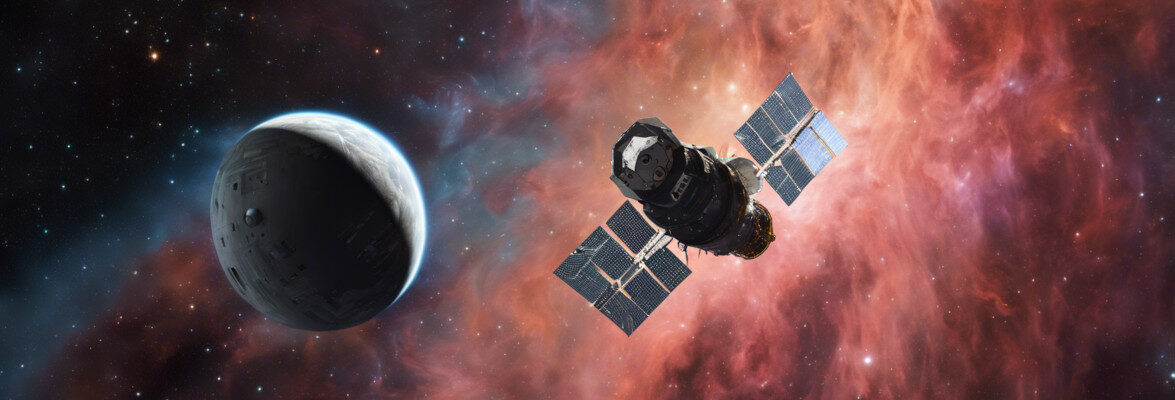
An image captured by the Hubble Space Telescope shows the galaxy NGC 2276. It’s a spiral galaxy that shows some peculiarities, as its shape is a bit distorted and the colors that indicate the distribution of the stars inside it reveal a certain irregularity. The reason for that is the interaction with a neighbor, the galaxy NGC 2300, whose force of gravity distorted some of NGC 2276’s spiral arms. Another interaction also involves the intergalactic gas that is present in the cluster that includes these two galaxies, which crashed into NGC 2276 triggering a high rate of star formation on an outer side of this galaxy.
About 120 million light-years from Earth, the galaxy NGC 2276 is of the spiral type, which is very common. However, its location within a galaxy cluster with the galaxy NGC 2300 close enough to generate an interaction makes it different from normal spiral galaxies and consequently worthy of more in-depth study.
In the bottom image, to the right of the galaxy NGC 2276, you can see its neighbor, NGC 2300, a smaller galaxy but still massive enough to generate a gravitational interaction between the two galaxies. The result is that the arms of NGC 2276 visible on the right side in the images are distorted.
The interaction with neighboring NGC 2300 isn’t the only one for the galaxy NGC 2276. The galaxy cluster it’s part of also contains intergalactic gas, which sometimes collides with a galaxy. In this case, the effects of the interaction are visible on what, in the images, is the left edge of NG 2276, where the color tends to blue with greater intensity than in other galactic areas. That’s the consequence of a remarkable star formation that led to the birth of many massive stars. There’s also the possibility that there was a collision with a dwarf galaxy in the past.
These characteristics make the galaxy NGC 2276 particularly interesting for astronomical studies on the evolution of galaxies and on the processes that trigger intense star formation. In recent decades, 6 supernovae, various ultra-luminous X-ray sources, and a possible intermediate-mass black hole, a type of black hole considered rare and elusive, have also been sighted in NGC 2276. Basically, there’s a lot of work for astronomers to follow interesting activities in and around the galaxy NGC 2276.


